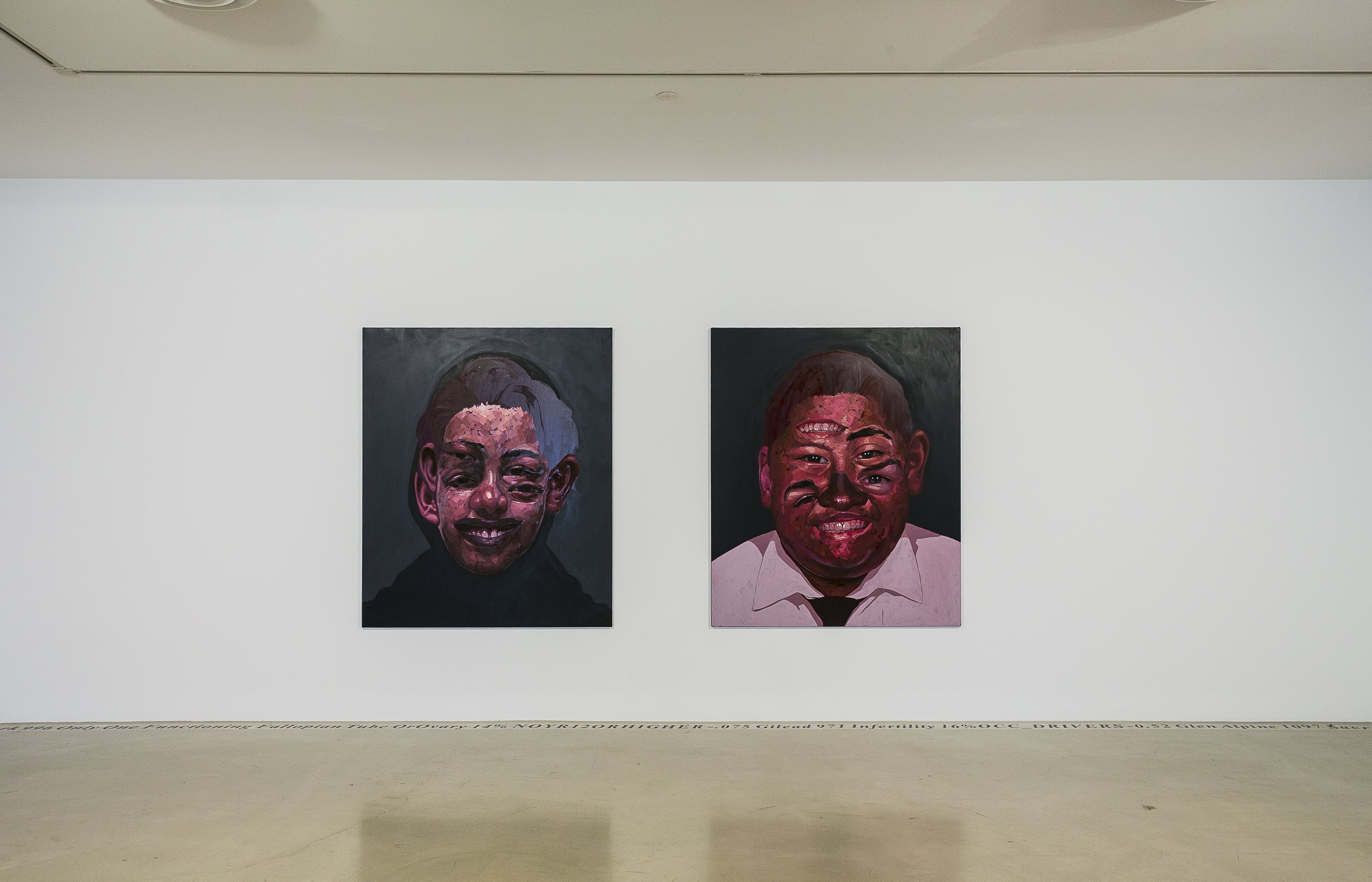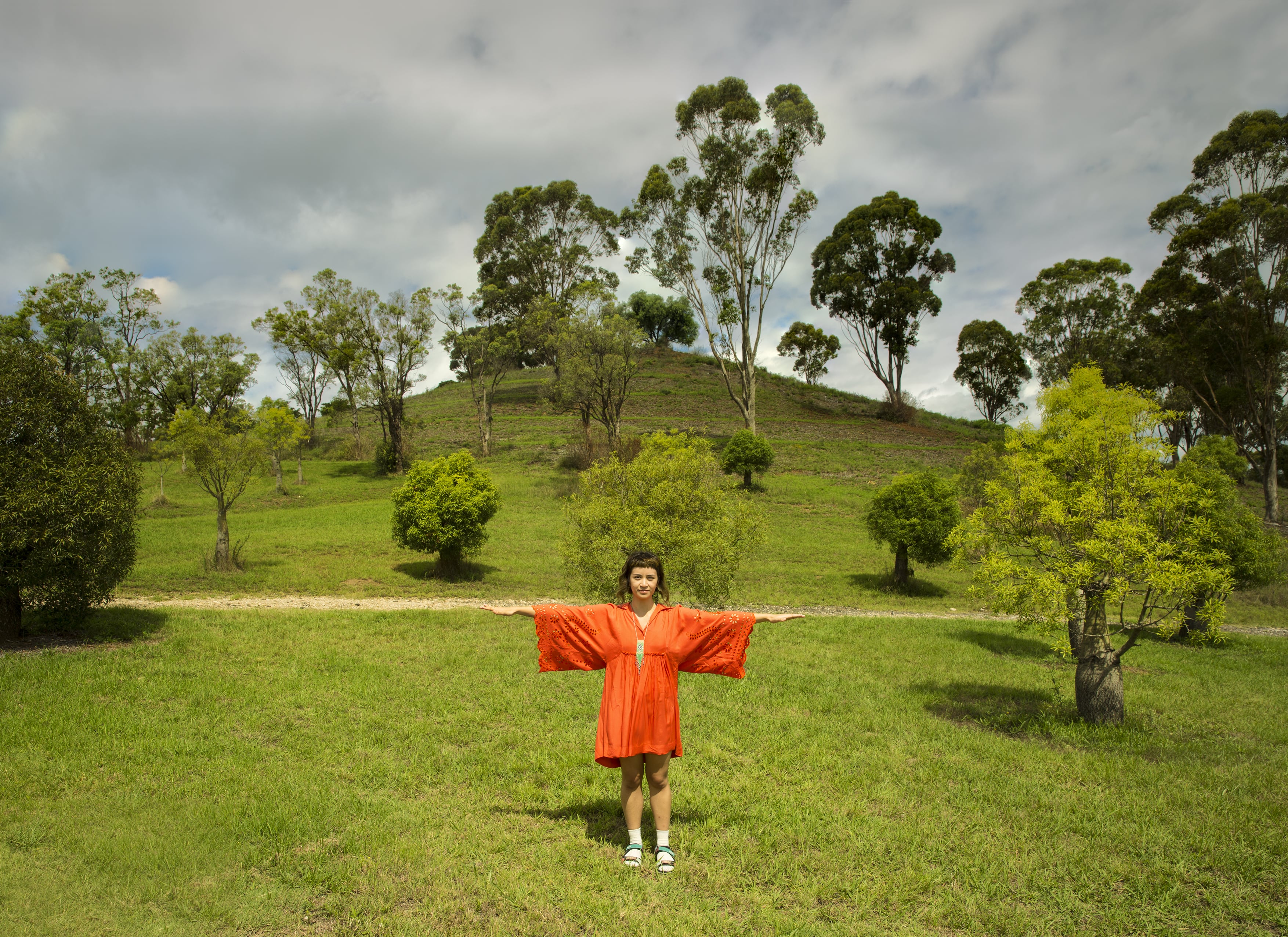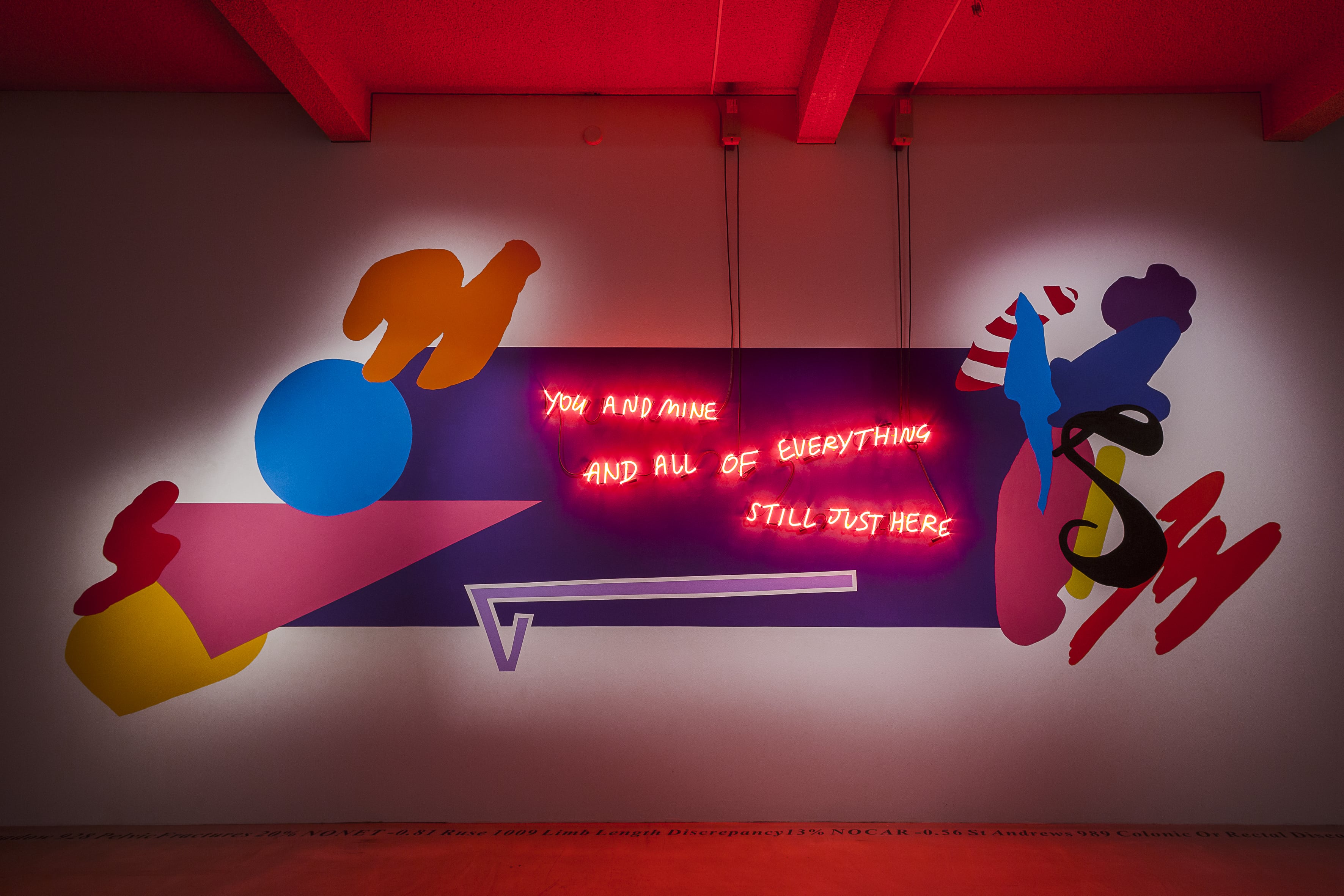


Artists: Abdul Abdullah, Andrew Christie, Mona Ibrahim, Sonia Leber & David Chesworth, James Nguyen, Pet Projects, Tom Polo, Keren Ruik, Damien Shen, Salote Tawale, Shevaun Wright and 110%
Curator: Megan Monte
Looking at me through you is a self-reflexive exhibition that responds to Campbelltown, a rapidly changing and developing suburb 50 kms south-west of Sydney’s central business district. Twelve artists were commissioned to create works that reflected the suburb and surrounds, with a set of statistics about the area provided as a starting point. The exhibition is as much an exploration of process as location; some artists engaged directly with the data while others went beyond to conduct their own research. What transpires is a multifaceted exhibition exploring the people, culture, geography and architecture that create this unique location.
As is alluded by the exhibition’s title, a common thread throughout the works is the concept of looking; seeing and being seen, visibility and invisibility. Sharing the exhibition’s title, Abdul Abdullah’s portraits looking at me (2017) and through you (2017) present surreal faces with multiple eyes, ears and mouths – features depicting students in nearby Claymore. The area has the youngest median age in the country at just seventeen, twenty years below the national average of thirty-seven. While developing this work Abdullah spent time with a year twelve class, who not only personify the median demographic of the area, but also echo the artist’s own experience of growing up. While Abdullah might identify with these students, he wonders how others more privileged might view them.1 Familiar yet distorted, these amalgamated faces play with concepts of representation and difference.
Shevaun Wright presents a re-interpretation of Félix González-Torres’ dateline series (begun in 1987) from an Aboriginal perspective. What could be mistaken for a string of arbitrary letters and numbers snaking its way around the floor of the exhibition is actually Campbelltown data found in The Index of Relative Socio-economic Disadvantage.2 Songline (After Félix González-Torres) (2017) prompts us to consider the dehumanising effect of statistics, with data pertaining to divorce and disability rates, for example, rendering personal stories as mere numbers.
In contrast, Andrew Christie tries to uncover the humour and banality behind the statistics. For You (Daniel and Sarah) (2017), Christie creates plain, 3D-printed busts of two ‘average’ Campbelltown residents, ‘Daniel’ and ‘Sarah’. The accompanying description, based on census data and the artist’s research, brings to life Daniel and Sarah’s painfully average existence in their three-bedroom house on Condamine Street, ‘furnished almost exclusively by IKEA and the interior decorating stores along Blaxland Road, with the odd souvenir scattered around from trips to Bali and London before the kids came.’3
Damien Shen, on the other hand, collaborated with local community members to create Searching with my good eye closed (2017). Featuring portraits of a Dharawal elder and her descendants, the paintings were started by Shen, an artist of Ngarrindjeri and Chinese descent, but ‘finished by the mob who belong here’.4 Physically and symbolically, Shen imposes an Aboriginal presence into the gallery, countering the invisibility of Aboriginal people within statistics, politics and institutions.
The use of space is an important consideration in both Tom Polo’s STILL JUST HERE (2017) and 110%’s Fieldwork (2017). Polo’s fluorescent wall painting incorporates visual elements of retail signage from nearby Queen Street mall, with a 1980s–90s aesthetic that harks back to a time when business was flourishing. Meanwhile, 110%’s sculptural and video installation featuring geometric forms and fake grass ¬— an allusion to outdoor gyms and recreation — comments on the importance of these public spaces amidst increasing private development.
James Nguyen’s garden bed installation, The Good Earth (2017), harbours similar anti-development sentiments. Located in the amphitheatre outside the gallery, this living installation references the growth of Western Sydney whilst considering the significance of land and toil to identity, particularly for migrants. In his artist statement in the exhibition catalogue, Nguyen urges us to reflect on our attachment to ownership and occupancy, highlighting the irony of Sydney’s ballooning house prices, a symptom of ‘legitimate’ land acquisition, against its previous illegitimate acquisition through colonisation.
The connection between land and identity is further explored in Mona Ibrahim’s work, Je pense a toi (2017). In this deeply personal video Ibrahim (who fled from politically unstable Egypt) reflects on the despair she feels in Australia, disconnected from her home country and unable to find work despite having a university degree. Another deeply personal work is Salote Tawale’s A yali! A maroroi! Qai kune! (2017), made in collaboration with Donita Hulme and Sam Vatuinaruku. Based on talanoa or the exchanging of stories in Fijian culture, the artists present an installation – ‘dressed’ in bright, floral-patterned Fijian fabric – featuring videos of communal Fijian activities such as food preparation as a means of sharing culture with the viewer. Keren Ruki’s installation Unfold the mat to allow us to talk (2017) is similarly imbued with cultural process. Straw mats suspended and laid on the ground — a symbol of the transition to the afterlife in Pacific cultures — become a memorial to those lost through suicide.
Pet Projects’ Mixed Business (2017) installation is an otherworldly experience, complete with conspiracy theories, UFOs and Furbies. The artists try to discover the supernatural aspects of Campbelltown with confusing results. Perhaps these speculations are best answered by Sonia Leber and David Chesworth’s Universal Power House (2017) project. A most surprising revelation, Leber and Chesworth uncover the architecture and manifesto of the Universal Power World Society, a fledgling society in the 1970s whose guiding principles (‘Universal Power Laws’) governed people, nature and the universe (Scientology, eat your heart out!). In the Near Future (2017) is a tongue-in-cheek video that combines excerpts of the Society’s manifesto with 1980s synth and comical dance routines. Set in the Society’s home base, a magnificent circular building dubbed ‘Saturn’s Rings’ and located atop of Mt Universe in Campbelltown, it’s something you might expect to stumble upon in a post-Soviet country, not an unassuming suburb in Western Sydney.5
Tian Zhang is a curator, creator and producer interested in culture and all its manifestations.
